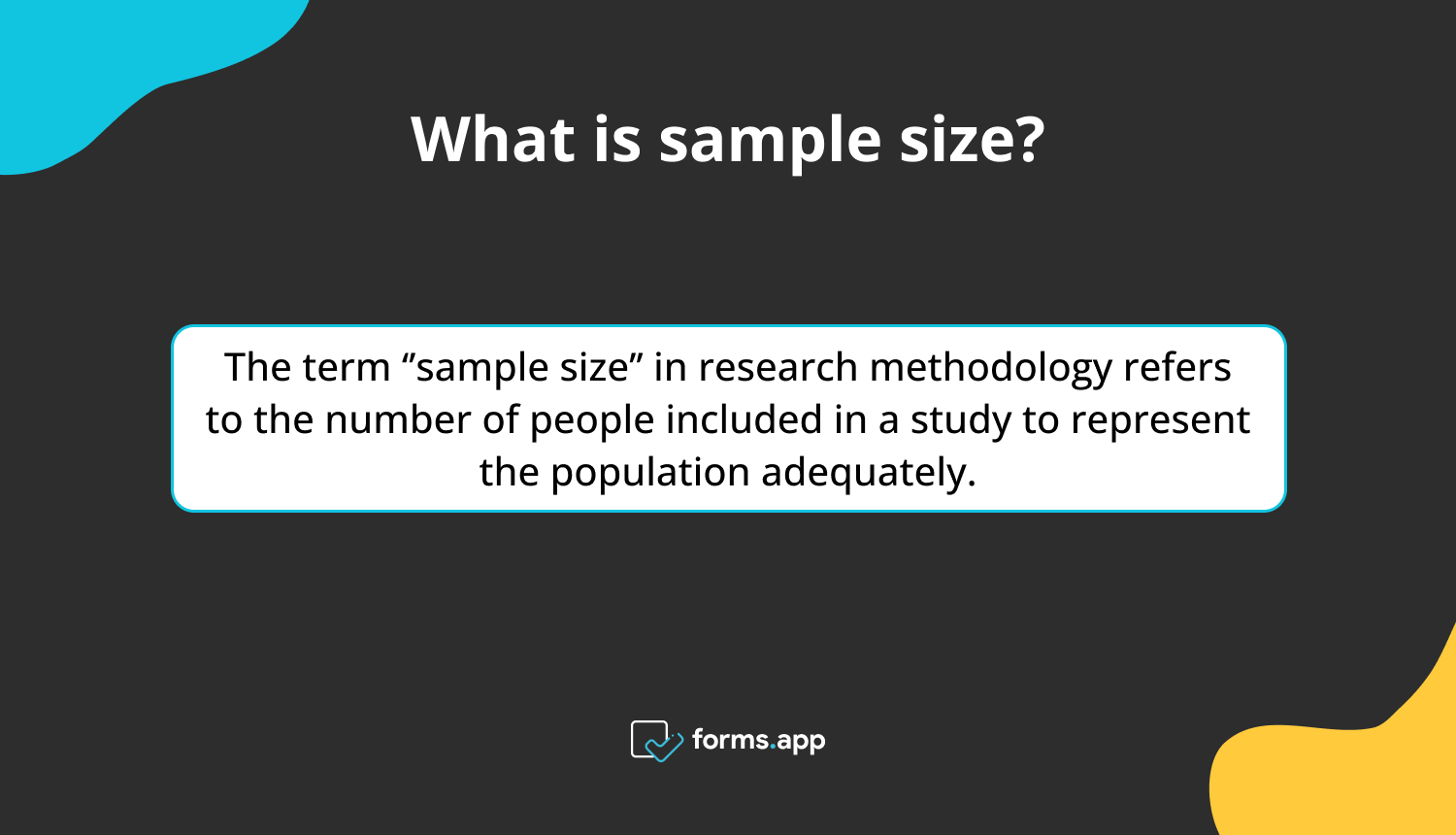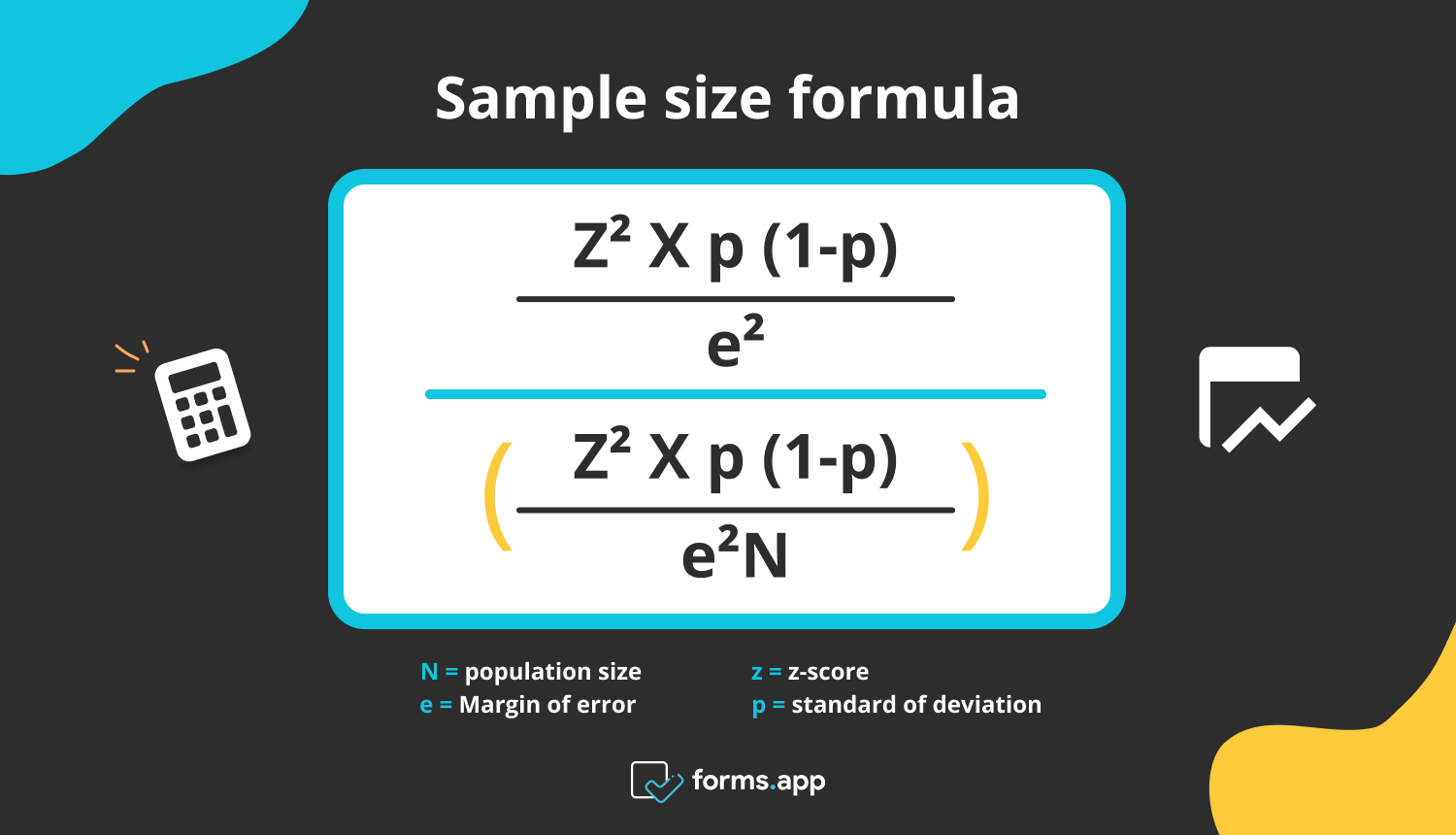The sample size is essential in your market research method. When researching a sizable sample of respondents, this phrase will come up automatically. Scientific studies frequently use surveys that are given to a sample of a larger population.
If you want your sample to accurately reflect the characteristics of the entire population it's meant to represent, you'll need to include a certain number of participants. This article will explain the sample size and how to find the sample size in full detail.
What is sample size?
The term ‘’sample size’’ in research methodology refers to the number of people included in a study to represent the population adequately. A survey’s sample size is the total number of participants, and this number is frequently broken down based on factors like location, gender, and age.
The final sample represents the entire population. Selecting the proper size of the sample is crucial. You get random samples of people who accurately represent the general population. You must choose a few set values and enter them into the proper formula to determine the required sample size.

The definition of sample size
Does sample size have an impact on research results?
The correct sample size is essential for obtaining accurate results. The study becomes difficult, expensive, and time-consuming when the size of the sample is too large. If the sample is too small, it includes an excessive number of outliners individuals. These bias the results making it impossible to obtain an accurate result.
Does the correct sample size changes with the research types?
You can select the proper sample size depending on the type of research you are conducting. You must first consider several variables that affect your descriptive research to choose the appropriate sample type. You will be able to put everything together and pick the right sample size once you are confident that your survey will be statistically accurate.
How to calculate sample size
You might only be able to reach some of the population for which you want to gather data during your market research. An ideal subset representative of the people and yields solid, statistically significant results can be quickly found by performing a sample calculation without using up all your resources. You can easily calculate the sample size in qualitative research and quantitative research. You can follow the steps below to calculate the sample size.
Step 1: What are your sample size variables?
Before calculating the sample size, you should determine some things that ascertain the target population characteristics and the required level of accuracy.
1 - Determine the population size
The population size of your demographic is the total number of people in that group. The first step is figuring out the bare minimum of people needed to represent your choice. Despite the abundance of population data available, you might be aiming for a complex population or one for which there currently needs more accurate data.
When dealing with relatively small, straightforward-to-measure groups of people, understanding the size of your population is more crucial. If the population is more extensive, you can use your best judgment and stick with it. This is the first step in a sample size formula, which produces results that more closely reflect the population and are more accurate than a simple estimate.
2 - Determine the confidence interval
The term "confidence interval" describes how much error you want to allow in your results. A percentage of how closely your survey results will likely reflect the general population's opinions. The lower the margin of error, the more confident you can be that you have the correct response. You can decide how much variation between the means of your sample and population should be permitted.
3 - Determine confidence level
The confidence level value gauges your level of assurance regarding how accurately, within your selected margin of error, a sample represents the entire population. A percentage that demonstrates your level of certainty that the general public would choose an answer from a particular range. It concerns your confidence that the actual mean will fall within your margin of error. The most typical confidence intervals are 90%, 95%, and 99%.
4 - Determine the standard deviation
The standard deviation reveals how much variation you can anticipate in your answers. The answers' variances from one another and the mean number can predict. When the standard deviation is low, values cluster around the mean value. In contrast, values are dispersed over a broad range with tiny and substantial outer numbers. Your survey still needs to be completed, so a standard deviation of 0.5 is a good choice.
Step 2: How to use the sample size calculation formula
You can choose the right sample size if you have a solid grasp of the underlying statistics and consider a wide range of variables influencing your research. You can calculate the it with an online sample calculation, or we can move on to how to calculate the sample manually.
1 - Discover your Z-score
The Z-score shows how many standard deviations a given ratio is from the mean. Your level of confidence needs to be converted into a Z-score.
The Z-scores for the most common confidence levels are:
- 90% Z-score = 1.645
- 95% Z-score = 1.96
- 99% Z-score = 2.576
2 - Apply the formula for the sample size
If you want to do the calculation manually, you can use the following formula:

The formula for calculating a sample size
- N = population size
- e = Margin of error
- z = z-score
- p = standard of deviation
- For example, let's say you choose a 95% confidence level.
Let the population size be 500, and the margin of level be 5.
Based on these data, your sample size would be 218.
Step 3: Take action
You can calculate your sample by placing the numerical data in the right places from the ready-made formula we shared. For example, if you decide to use a 95% confidence level, you should change the values in the formula. You can easily calculate your sampling size by following the abovementioned steps.
How do survey values affect accuracy?
A survey sampling can give you valuable answers without having a sample size representative of the general population. Customer satisfaction surveys fall into this category, whether or not the sample size is statistically significant. Your business can be improved by considering your customers' feedback.
However, some pollsters, such as those who work in politics, must be cautious when determining the proper sample size. Using specific use case studies, you can learn more about whether a statistically significant sample size matters. You can find the effects of survey values on accuracy in the table below.

The impact of survey values
Sample size calculator
Tools for automatic sample size calculation are very practical. After determining the numerical data required to measure the sample size, you can place the data in their correct places. You can quickly calculate the sample size automatically below.
Conclusion
In conclusion, sample calculation is essential. Since a tiny study is more likely to yield ambiguous, false, or erroneous findings, additionally, extensive research will waste limited resources like money, subjects, and time.
You should gain a fundamental understanding of the statistics involved and consider various factors influencing your exploratory research to select the appropriate sample size. You can use an easy sample size formula or even calculators to calculate sample size to make your calculation faster. After that, you can easily create your own survey and conduct solid research in a few steps.
forms.app, your free form builder
- Unlimited views
- Unlimited questions
- Unlimited notifications



